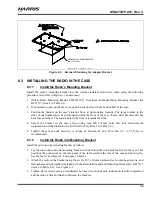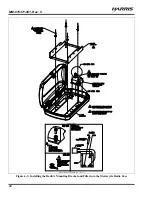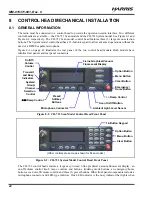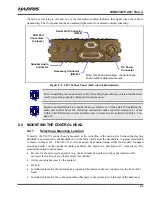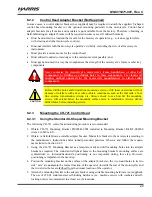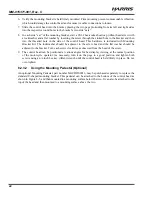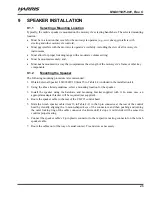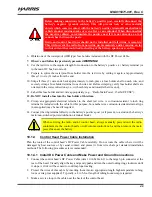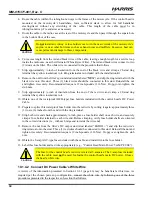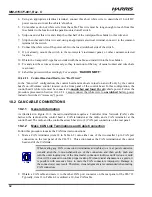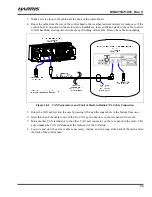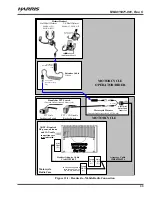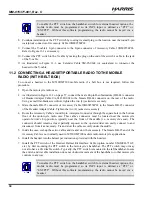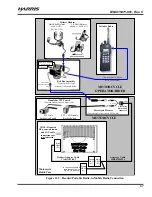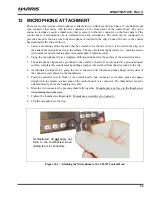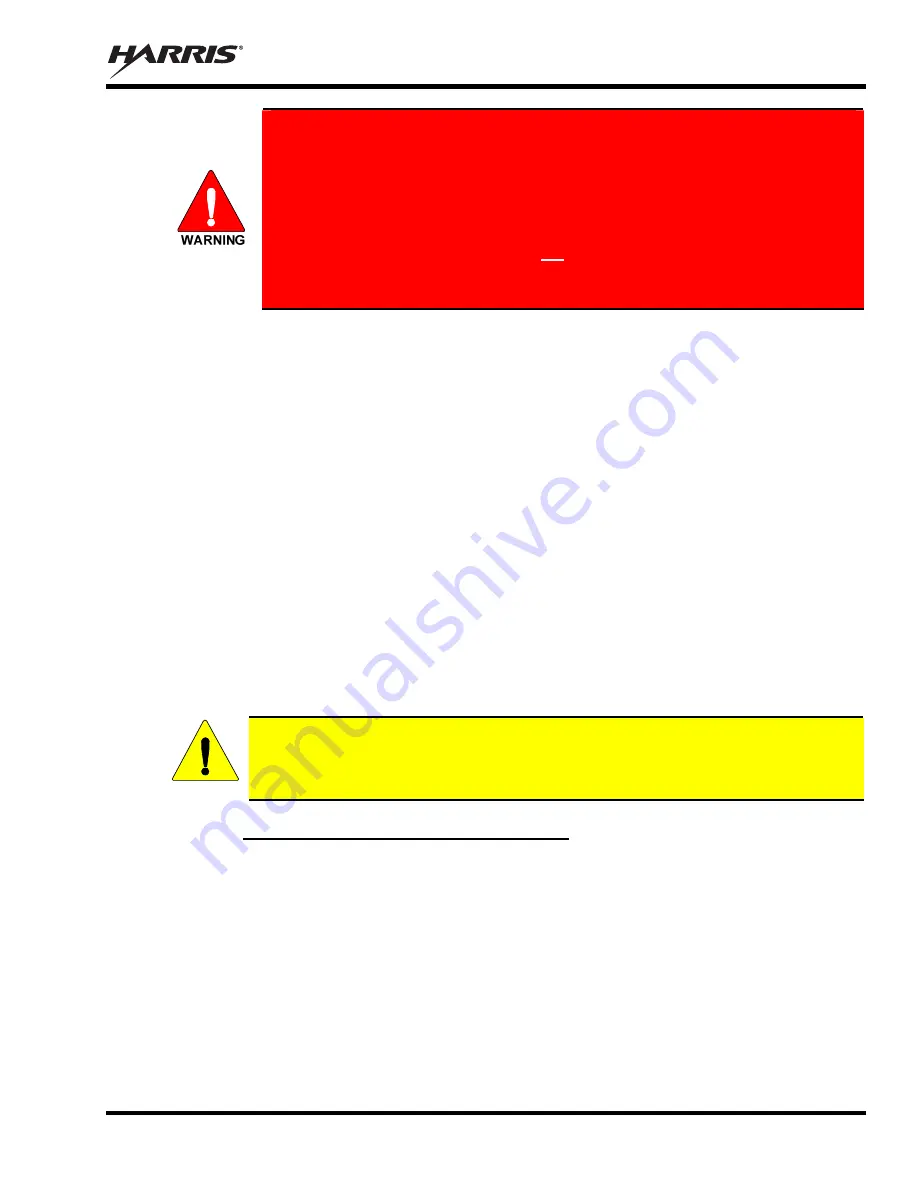
MM-015371-001, Rev. C
49
Before making connections to the battery’s positive post, carefully disconnect the
battery’s negative (ground) cable(s). This will prevent tools or other metallic
objects which come in contact with the battery’s positive terminal from shorting to
vehicle ground, causing sparks or even a fire or an explosion! When disconnecting
the negative cable(s), cover/insulate the positive post if it is not already so a tool
cannot short between the posts.
Radio and control head fuses should not be installed until all wiring is complete.
This will prevent the radio from powering up prematurely and/or causing an in-
rush of current that could lead to shorting of the battery, sparks, or even fire.
6.
Obtain one of the waterproof (HFB type) fuse holders included with the DC Power Cable.
7.
Observe and follow the previously presented
WARNING!
8.
Cut the red wire to the required length for connection to the battery’s positive (+) battery terminal (or
to the main DC bus bar or stud).
9.
Prepare to splice the waterproof fuse holder into the red wire by cutting it again, at approximately
three (3) to six (6) inches from the end.
10.
Strip all three (3) wire ends back approximately
⅜
-inch, place a fuse holder shell on each wire, and
securely crimp a fuse holder terminal to each wire end. Before crimping, verify fuse holder shells are
oriented in the correct directions (i.e., with each large end towards the wire end).
11.
Label this fuse holder and red wire appropriately (e.g., “Radio Main Power: 15-AMP FUSE”).
12.
Do NOT install a fuse into the fuse holder at this time.
13.
Crimp an appropriate electrical terminal to the short red wire. A corrosion-resistant
⅜
-inch ring
terminal is included with the cable for this purpose, but another size corrosion-resistant terminal type
(not supplied) may be used if required.
14.
Connect the ring terminal directly to the battery’s positive post (or if present, to a stud on the battery’s
main/non-switched power distribution terminal block).
CAUTION
When servicing the radio and/or control head, always manually power-down the radio
equipment via the control head’s on/off/volume control knob, and then remove the main
power fuse near the battery.
10.1.4
Control Head Power Cable Installation
Plan the route of the control head’s DC Power Cable carefully. Do not route the cable where it will be
damaged by heat sources or by casual contact, and protect it from wire chafe per standard installation
methods. The following procedures are recommended:
10.1.4.1 Install DC Power Cable and Make Power and Ground Connections
1.
Connect the control head’s DC Power Cable (item 10 in Table 4-2) to the large 3-pin connector at the
rear of the head. Visually align the key and gently push and turn the outer locking ring clockwise until
it stops. A click will be sensed to confirm proper mating.
2.
Protect the wires of this cable by inserting them into an appropriate-length high-temperature tubing,
loom or wrap (not supplied). Typically, a 4 to 5-foot length of tubing/loom/wrap is required.
3.
Make a service loop in the cable near the back of the control head.

